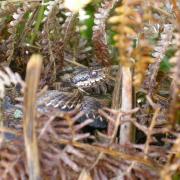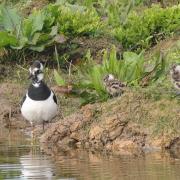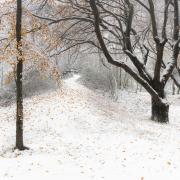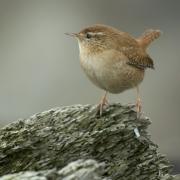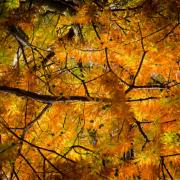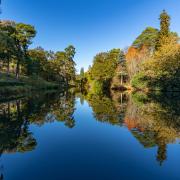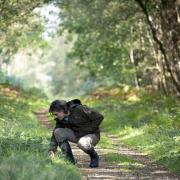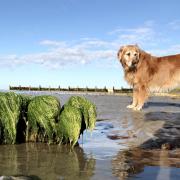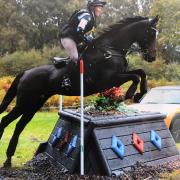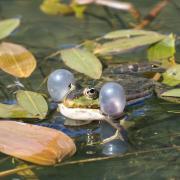Arundel Wetland Centre’s reserve manager Paul Stevens explains why it’s the perfect place to get started in wildlife photography

Even in the darkest depths of winter, there is rare beauty to be found. All we have to do is look.
In the inexorable age of the smart phone we are frequently exhorted to look with our own eyes instead of through a camera lens: musicians tell of performing to a sea of phone screens instead of human faces; visitors to city museums have to battle through a thicket of selfie sticks.
Conversely, photography can teach us how to look more closely, how to view things differently. On a recent winter trip to Arundel Wetland Centre I was surprised to find most of the other visitors held professional-looking cameras and I wanted to find out more about wildlife photography opportunities on the reserve.

Arundel Wetland Centre opened in 1976 on land leased from the Norfolk Estate. The tranquil 65-acre site boasts lakes, reed beds, channels and waterfalls, all of which support a rich array of indigenous wildlife as well as a large and varied collection of international wildfowl. The site is home to 250 birds of rare and endangered species from around the world, including the Hawaiian nene, the rarest goose in the world.
While there are other similar habitats nearby such as Amberley Brooks and RSPB Pulborough Brooks, Arundel is remarkable for the diversity of its habitats, the compactness of the site, and the proximity to the birds. All of which have been prized by reserve manager Paul Stevens throughout his 12 years here. For alongside his daily work on the reserve, Paul is a keen snapper and is seldom without his camera when he's doing his rounds. "This is a really nice place to get started in wildlife photography," he says. "The opportunities here are massively increased because you're on a nature reserve and everything is very accessible. For beginners it can be really difficult looking out for identifying features on some of these birds so that proximity is key. You can go from wet woodland to reed grass beds very quickly so you've got that variety."

In Paul's view, having the right equipment isn't nearly as important as having the right attitude and approach. "It doesn't matter what camera you've got - for me the key is to put that camera in the right position. We get a lot of people coming here saying they want to photograph a kingfisher. You're either really lucky, and one perches up in front of you, or you have to work at your field craft. You have to know what the kingfisher knows: where the fish are, the best perch to fish from, and you need to know their call so you have a heads up that they're on their way.
We get a lot of people coming when it's nice and bright and sunny which is great, but think about other times as well. Try frosty days and rainy days too - to get a picture of a kingfisher with water droplets and rain falling is just amazing. Don't worry about the weather, just get that camera in the right place."
Seasonal Guide

Winter: kingfishers, goldcrest and firecrest, bittern, water rail
Spring: frogs and toads, water voles, snipe, oystercatchers and lapwings
Summer: pipistrelle bats, butterflies, dragonflies, bees and many more insect species, reed warbler, sedge warbler, cuckoo, common sandpiper and green sandpiper
Autumn: first of the winter migrants land, including tufted duck, pochard and mallard and, sometimes, 100 or more Canada geese. Numbers of wintering wildfowl start to increase such as teal, gadwall, shoveler and shelduck

One of the attractions of nature photography is the constantly shifting variables. Obviously, weather is one - and climate change can impact water levels and the behaviour of migratory birds among other things. Paul points to the arrival on site of an aquatic weed called holly-leaved naiad which appeared in the Wetlands Discovery area. "That arrived four years ago, completely out of the blue, and the only other place it grows in the whole of the UK is on the Norfolk Broads. We still don't know how it got here but it also appeared last year in East Sussex, so we don't know whether there is some mechanism spreading it or whether it is climate change - it's quite a common species in Europe so perhaps the warming climate is starting this off."
There have been other new arrivals in recent years too. One of the reserve's greatest success stories is the reintroduction of water voles in a three-stage programme between 1999 and 2005. This population has boomed and moved outside the reserve to join up with the water vole population in the Arun Valley.
Paul says: "We also have a marsh harrier roost which has been fantastic - last week we had up to 11 marsh harriers roosting in the reed bed and one hen harrier, which is a bird that's really quite scarce in the UK. There's at least two or three hen harriers hunting in the valley and March last year was the first time we had one roosting."
For photographers, the muted colours of winter are a boon as they allow for easier sightings of bright plumage: "A couple of our smallest birds, the goldcrest and firecrest, are mooching around the hedgerows and trees so at the moment they're a lot easier to see and photograph," says Paul. "And if it ever does get cold, kingfishers almost become oblivious to human presence because they're so hungry." Here he sounds a note of caution: "You need to have respect for your subject. I've seen a lot of people chasing things: they might get too close to a kestrel so it moves on and then they get too close again, when really it's about waiting." Chasing a hungry bird away from its food is, of course, undesirable. And the best photographs, says Paul, capture normal bird behaviour - so it's an artistic as well as a welfare issue.
By far the most important characteristic for a budding wildlife photographer is patience - a quality sometimes in short supply in our age of instant gratification. And knowing an area well can only be an advantage - the more you visit, the more you'll improve your understanding of the birds' behaviour and their favoured spots. As such, Paul is in an enviable position - but there are still photographs that have eluded him. "I'd love to get a decent shot of a hen harrier," he says. "One of my all-time aims is to get a good shot of a male. They are stunning."
Perhaps this will be his year.





